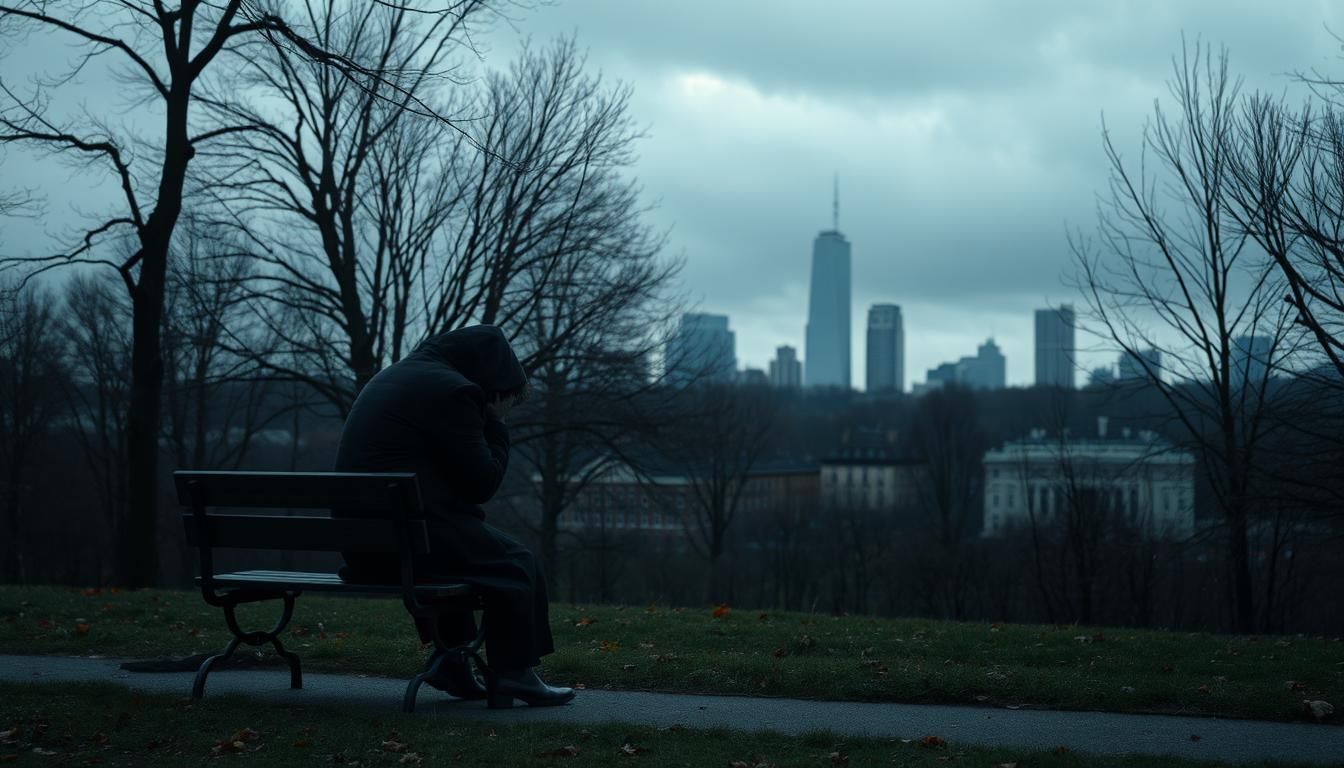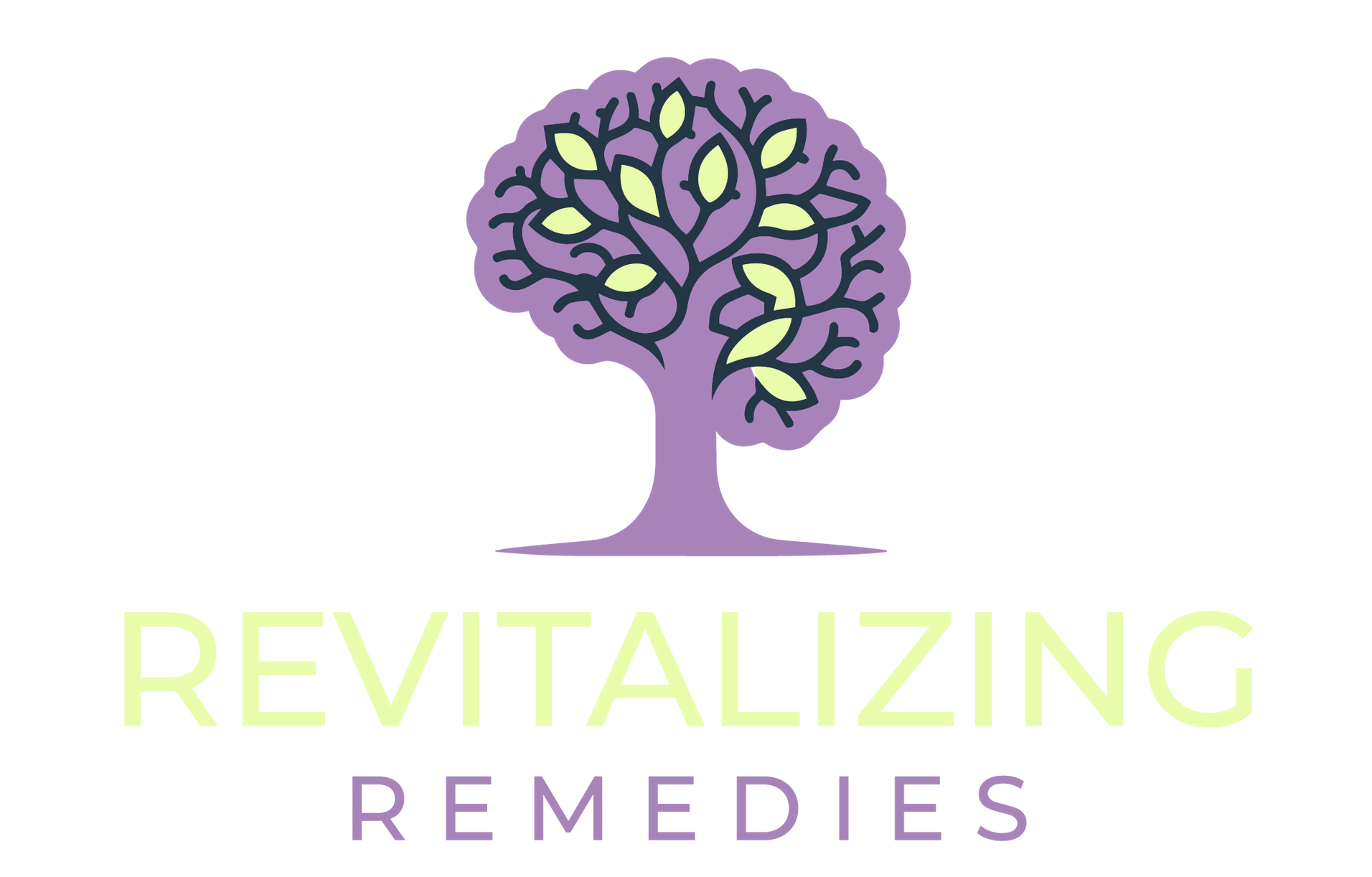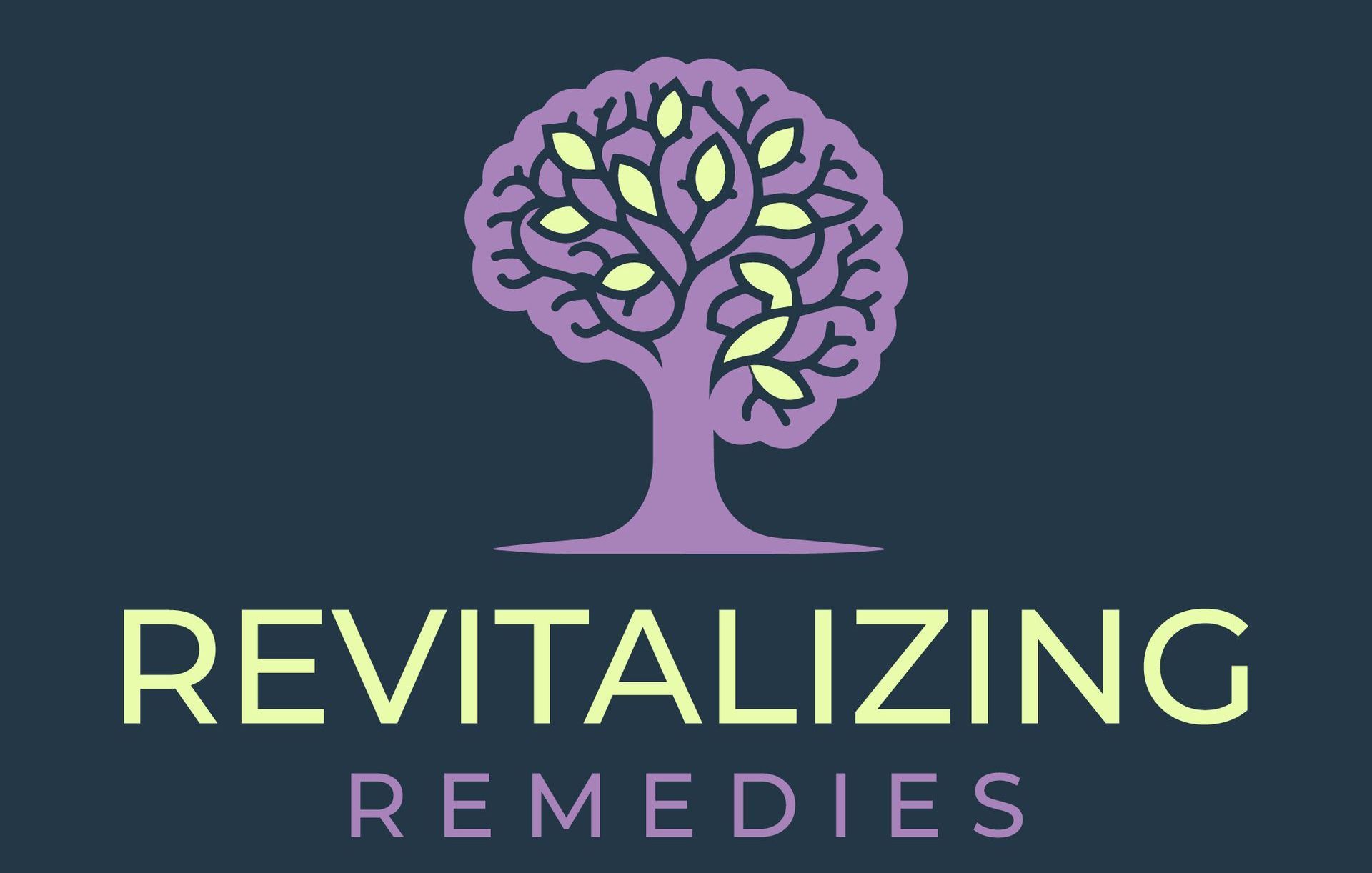Beyond Blue: Understanding Seasonal Affective Disorder (SAD) Beyond Winter and Preparing for Fall Me
When most people think of Seasonal Affective Disorder (SAD), they picture the cold, dark days of winter. However, this mental health condition isn’t limited to one season. It can also occur during the warmer months, often overlooked but equally impactful. Understanding both patterns is key to managing symptoms effectively.

At Revitalizing Remedies, we’re proud to lead Morris and Sussex County in offering FDA-approved treatments like Spravato and NeuroStar TMS. These innovative solutions provide hope for those struggling with depression and anxiety tied to seasonal changes.
As Mental Health Awareness Month approaches, it’s the perfect time to prepare for fall. Whether you’re managing back-to-school stress or seasonal transitions, this article will guide you with practical strategies and insights.
Key Takeaways
- Seasonal Affective Disorder (SAD) affects both winter and summer months.
- Revitalizing Remedies offers FDA-approved treatments for SAD.
- Summer SAD symptoms are often overlooked but equally important.
- Fall preparation aligns with Mental Health Awareness Month.
- Practical strategies can help manage seasonal transitions and anxiety.
What is Seasonal Affective Disorder (SAD)?
Many associate Seasonal Affective Disorder with winter, but it’s more complex than that. This type of depression follows a seasonal pattern, often recurring at the same time each year. According to the DSM-5, it’s classified as major depressive disorder with a seasonal component, requiring at least two annual episodes to diagnose.
Winter-pattern SAD is the most common, linked to shorter days and reduced sunlight. Summer-pattern SAD, though less discussed, involves longer days and increased heat. Both types share symptoms like fatigue, mood swings, and changes in sleep patterns, but their biological triggers differ. Winter patterns often involve serotonin and melatonin imbalances, while summer patterns may stem from heat and light sensitivity.
It’s important to distinguish SAD from general depression or the "holiday blues." While the latter is temporary, SAD symptoms persist for 4-5 months, significantly impacting daily life. Research from the Institute of Mental Health shows that those living above the 37th parallel face a 1.5x higher risk, highlighting the role of geography in this condition.
At Revitalizing Remedies, we use seasonal symptom tracking to diagnose and treat SAD effectively. By understanding the unique patterns of each type, we tailor treatments to help patients regain balance and improve their mental health.
Summer SAD: The Lesser-Known Seasonal Affective Disorder
While winter blues are widely recognized, summer can also bring its own set of mental health challenges. Often overlooked, this condition affects about 10% of those who experience seasonal mood changes. Unlike its winter counterpart, summer SAD presents unique symptoms and triggers that can disrupt daily life.
Symptoms of Summer SAD
Summer SAD often manifests in ways that contrast sharply with winter patterns. Common symptoms include insomnia, agitation, and poor appetite. Unlike winter weight gain, many individuals experience weight loss due to reduced food intake.
Other signs include heightened anxiety, irritability, and changes in behavior. These symptoms can make it difficult to enjoy activities typically associated with summer, such as outdoor gatherings or vacations.
Causes and Triggers of Summer SAD
The exact causes of summer SAD are still being studied, but several factors are believed to play a role. Heat and humidity can disrupt melatonin production, leading to sleep problems. Longer days and increased sunlight exposure may also misalign the body’s circadian rhythm.
Climate change is another emerging factor, as rising temperatures and unpredictable weather patterns may exacerbate these triggers. Understanding these causes is crucial for developing effective coping strategies.
"Managing summer SAD requires a tailored approach, as traditional winter treatments may not be effective."
| Symptom | Winter SAD | Summer SAD |
|---|---|---|
| Sleep Patterns | Excessive sleep | Insomnia |
| Appetite | Increased, weight gain | Decreased, weight loss |
| Mood | Lethargy | Agitation |
At Revitalizing Remedies, we’ve seen success in managing summer SAD through innovative treatments like TMS therapy. One patient, a 35-year-old teacher, found relief from her symptoms after just six weeks of treatment. Her story highlights the importance of seeking help and exploring tailored solutions.
Back-to-School Anxiety: A Hidden Fall Challenge
As fall approaches, many adults face unexpected challenges beyond the changing leaves. While kids prepare for school, parents and professionals often grapple with back-to-school anxiety. This hidden struggle can disrupt daily life, making it harder to balance responsibilities.
Why Adults Experience Back-to-School Anxiety
For adults, the transition to fall often involves juggling multiple roles. Parents must manage their children’s schedules while maintaining their own professional responsibilities. This shift can lead to heightened anxiety and stress.
The "September Effect" is another factor. Studies show workplace productivity drops during this time, as employees adjust to new routines. These changes can amplify feelings of overwhelm, especially for those already managing mental health concerns.
Managing Back-to-School Anxiety Effectively
To navigate this challenging period, consider these strategies:
- Establish a Routine: Create a consistent schedule to reduce uncertainty and stress.
- Practice Cognitive-Behavioral Techniques: Identify and challenge negative thought patterns.
- Explore Wellness Programs: Revitalizing Remedies offers August programs designed to ease schedule transitions.
For acute cases, medication management may also be an option. At Revitalizing Remedies, we’re here to help you navigate these changes and prioritize your mental health.
| Strategy | Benefit |
|---|---|
| Routine Establishment | Reduces stress and improves time management |
| Cognitive-Behavioral Techniques | Helps reframe negative thoughts |
| Wellness Programs | Provides tailored support for transitions |
Preparing for Fall: Mental Wellness Strategies
As the leaves begin to change, it’s time to focus on mental wellness for the fall season. Transitioning into cooler months can bring challenges, but with the right strategies, you can maintain balance and thrive. A routine mental health plan is essential for navigating these changes effectively.
Establishing a Routine for Mental Health
Creating a consistent daily routine can significantly reduce stress and improve overall well-being. Start by waking up 15 minutes earlier each day. According to a Mayo Clinic study, this simple adjustment can lower the risk of seasonal mood changes by 38%.
Incorporate activities that promote relaxation and focus, such as morning meditation or evening journaling. These small habits can make a big difference in managing change during seasonal transitions.
Managing Change During Seasonal Transitions
Fall often brings shifts in schedules and responsibilities. To ease this transition, consider these strategies:
- Light Exposure Management: Adjust your home and office lighting to mimic natural daylight. Use full-spectrum light bulbs to combat shorter days.
- Nutritional Adjustments: Incorporate foods rich in tryptophan, like turkey and nuts, to support serotonin production.
- Workplace Accommodations: Request flexible hours or remote work options to better align with your energy levels.
Revitalizing Remedies’ August Reset program is designed to help you prepare for fall. This six-week plan includes personalized coaching, light therapy sessions, and nutritional guidance to support your mental wellness.
| Strategy | Benefit |
|---|---|
| Morning Routine | Reduces stress and improves focus |
| Light Exposure | Regulates circadian rhythm |
| Nutritional Support | Boosts serotonin levels |
By taking proactive steps now, you can set yourself up for a healthier, more balanced fall season. Prioritize your routine mental health and embrace the changes ahead with confidence.
Light Therapy and Other Treatments for SAD
Light therapy has emerged as a leading solution for managing seasonal mood changes. This treatment involves exposure to bright artificial light, mimicking natural sunlight. Studies show that 10,000 lux light therapy achieves a 53% remission rate, compared to just 11% with a placebo.
How Light Therapy Works
Light therapy works by regulating the body’s circadian rhythm. It helps balance serotonin and melatonin levels, which are often disrupted during seasonal changes. Morning use is most effective, as it aligns with the body’s natural wake cycle.
When choosing a light box, consider lux levels, UV filters, and timing. Higher lux levels provide faster results, while UV filters protect your eyes. Here’s a comparison of popular options:
| Feature | 10,000 Lux | 5,000 Lux |
|---|---|---|
| UV Filter | Yes | No |
| Recommended Use | Morning | Evening |
| Session Duration | 20-30 minutes | 40-60 minutes |
Alternative Treatments for Seasonal Affective Disorder
For those who don’t respond to light therapy, other treatments are available. Esketamine nasal spray, for example, accelerates response times by 3-4x compared to traditional SSRIs. This innovative form of treatment is gaining traction for its rapid results.
Vitamin D supplementation is another option, though its efficacy is debated. Some studies suggest it helps, while others show no significant impact. Dawn simulators, which mimic natural sunrise, are also effective for circadian entrainment.
Ongoing research explores ketamine derivatives for treatment-resistant cases. NIH trials are investigating their potential to provide long-lasting relief. At Revitalizing Remedies, we combine these treatments with personalized care to ensure the best outcomes.
The Role of Routine in Mental Health
A structured day is one of the most powerful tools for maintaining mental health. Consistency in daily activities helps regulate emotions, reduce stress, and improve overall well-being. Whether you’re managing seasonal transitions or everyday challenges, a solid routine can make a significant difference.

Why Routine is Crucial for Mental Wellness
Our bodies thrive on predictability. The circadian rhythm, our internal clock, relies on consistent sleep and wake times to function optimally. According to the Cleveland Clinic, consistent sleep schedules reduce relapse risk by 68% in patients with seasonal mood changes.
Routine also helps manage stress by reducing uncertainty. When you know what to expect each day, it’s easier to focus on tasks and maintain emotional balance. This is especially important during seasonal changes, when disruptions can feel overwhelming.
Tips for Building a Healthy Routine
Creating a routine doesn’t have to be complicated. Start with small, manageable changes and build from there. Here are some strategies to get started:
- Set Consistent Sleep and Wake Times: Aim for 7-9 hours of sleep each night. Go to bed and wake up at the same time every day, even on weekends.
- Incorporate Physical Activities: Exercise boosts mood and energy levels. Try to include at least 30 minutes of movement in your daily schedule.
- Plan Meal Times: Eating at regular intervals supports metabolic health and stabilizes energy levels.
- Use Digital Tools: Revitalizing Remedies offers habit-tracking apps to help you stay on track with your goals.
| Activity | Time | Benefit |
|---|---|---|
| Morning Meditation | 7:00 AM | Reduces stress and improves focus |
| Lunch Break | 12:30 PM | Supports metabolic synchronization |
| Evening Walk | 6:00 PM | Boosts mood and relaxation |
For those balancing work and personal life, consider workplace adaptations. Flexible hours or remote work options can help align your schedule with your energy levels. By prioritizing routine mental health, you can navigate seasonal changes with confidence and resilience.
Revitalizing Remedies: Your Partner in Mental Health
Finding the right treatment can transform your mental health journey. At Revitalizing Remedies, we’re committed to providing innovative solutions tailored to your needs. Serving Morris and Sussex County, we’ve become a trusted name in health care, offering FDA-approved interventions like Spravato and NeuroStar TMS.
About Revitalizing Remedies
Revitalizing Remedies is a leading institute mental health provider in New Jersey. Our team includes psychiatrists, nurse practitioners, and counselors who work together to deliver comprehensive care. We understand that every individual’s journey is unique, and we’re here to support you every step of the way.
Innovative Treatments Offered by Revitalizing Remedies
Our treatment options are designed to address a wide range of mental health challenges. NeuroStar TMS therapy involves 36 sessions over 9 weeks, targeting areas of the brain associated with mood regulation. For acute episodes, esketamine nasal spray offers rapid relief, often within hours.
Our integrated care model ensures that patients receive holistic support. In 2023, our patients experienced an 82% reduction in symptoms, showcasing the effectiveness of our approach. Whether you’re seeking short-term relief or long-term solutions, Revitalizing Remedies is here to help.
Seasonal Affective Disorder and Bipolar Disorder
The relationship between bipolar disorder and seasonal mood changes is often overlooked but crucial for effective treatment. Research from the National Institute of Mental Health (NIMH) shows that 25% of individuals with bipolar disorder experience a seasonal pattern in their episodes. This connection requires specialized care to manage symptoms effectively.

Understanding the Connection
Bipolar disorder involves alternating episodes of mania and depression. Seasonal changes can amplify these symptoms, particularly in spring and fall. For example, spring often triggers manic episodes in bipolar II patients, while fall may lead to depressive states.
Light therapy, a common treatment for seasonal mood changes, requires cautious implementation in bipolar patients. According to the Mayo Clinic, it can trigger manic episodes if not monitored carefully. This highlights the need for tailored treatment plans.
Managing SAD in Bipolar Patients
At Revitalizing Remedies, we’ve developed specific protocols to address these challenges. Our approach includes:
- Mood Stabilizer Adjustments: We modify medications like lithium during seasonal transitions to prevent relapse.
- Light Therapy Monitoring: For rapid-cycling cases, we carefully assess the risks and benefits of light therapy.
- Lithium Level Checks: Regular monitoring ensures optimal dosage, especially during seasonal shifts.
"Tailored treatments are essential for managing bipolar disorder in the context of seasonal changes."
| Strategy | Benefit |
|---|---|
| Mood Stabilizer Adjustments | Prevents relapse during seasonal transitions |
| Light Therapy Monitoring | Reduces risk of manic episodes |
| Lithium Level Checks | Ensures optimal medication effectiveness |
One success story involves a patient with bipolar-SAD comorbidity. After six weeks of NeuroStar TMS therapy, they experienced a significant reduction in symptoms. This case highlights the importance of personalized care in managing complex conditions.
Mental Health Awareness Month: A Time for Reflection
Every October, Mental Health Awareness Month shines a light on the need for better mental health care. This annual observance encourages individuals and communities to prioritize emotional well-being and address the challenges many face. With 57% of employers expanding mental health benefits during this time, it’s a pivotal moment to reflect and take action.
The Importance of Mental Health Awareness
Mental Health Awareness Month plays a crucial role in breaking stigmas and fostering understanding. It’s a time to recognize the importance of care and support for those struggling with their thoughts and emotions. By raising awareness, we can create a more compassionate society where everyone feels valued.
Revitalizing Remedies is proud to contribute to this mission. This October, we’re offering free screenings to help individuals identify and address their mental health needs. These initiatives aim to make care accessible and reduce barriers to treatment.
How to Participate in Mental Health Awareness Month
There are many ways to get involved and make a difference. Here are some meaningful ways to participate:
- Workplace Toolkits: Encourage your employer to observe Mental Health Awareness Month by providing resources and training. This can include workshops, mental health days, and access to counseling services.
- Suicide Prevention Training: Learn how to recognize warning signs and support those in crisis. Organizations like Revitalizing Remedies offer training programs to equip individuals with life-saving skills.
- Advocacy: Support legislative efforts to fund research and improve mental health services. Your voice can help drive meaningful change.
"Mental Health Awareness Month reminds us that taking care of our minds is just as important as caring for our bodies."
Media representation has also improved, with more accurate portrayals of seasonal depression and other conditions. This shift helps reduce stigma and encourages open conversations about mental health.
By participating in Mental Health Awareness Month, you can contribute to a healthier, more supportive community. Let’s work together to prioritize mental health and ensure no one feels alone in their journey.
Conclusion: Taking Charge of Your Mental Wellness
Taking control of your mental health starts with small, actionable steps. Setting up light therapy, planning a consistent routine, and seeking professional support can make a significant difference. October and November are critical months to address these needs effectively.
At Revitalizing Remedies, we’re here to help. With our same-week appointment guarantee, you can start your journey without delay. Schedule online or call us at (201)-727-3241 to take the first step.
Managing seasonal challenges isn’t just about the present—it’s about building long-term wellness. Empower yourself with the right tools and support to thrive year-round.
FAQ About Seasonal Affective Disorder and Preparing for It
What is Seasonal Affective Disorder (SAD)?
It’s a type of depression linked to changes in seasons, often starting in fall and continuing through winter. It’s more than just "winter blues" and can impact daily life.
How is SAD different from general depression?
Unlike general depression, SAD follows a seasonal pattern, typically occurring during specific months. Symptoms like low energy and mood changes align with seasonal shifts.
Can SAD happen in summer?
Yes, some people experience summer SAD. Symptoms may include anxiety, insomnia, and irritability, often triggered by heat and longer daylight hours.
What are common symptoms of summer SAD?
Symptoms include trouble sleeping, weight loss, agitation, and increased anxiety. It’s less common than winter SAD but equally impactful.
Why do adults experience back-to-school anxiety?
Even adults can feel stress during this time due to changes in routine, increased responsibilities, or memories of past school-related pressures.
How can I manage back-to-school anxiety?
Planning ahead, setting realistic goals, and practicing self-care can help ease this stress. Staying organized also reduces feelings of overwhelm.
What’s the best way to prepare for fall mentally?
Establishing a consistent routine, staying active, and incorporating light therapy can help manage mood changes during seasonal transitions.
How does light therapy work for SAD?
Light therapy mimics natural sunlight, helping regulate mood and sleep patterns. It’s a common treatment for winter-related symptoms.
Are there alternative treatments for SAD?
Yes, options include talk therapy, medications, and lifestyle changes like exercise and maintaining a healthy diet. Vitamin D supplements may also help.
Why is routine important for mental health?
A consistent routine provides structure, reduces stress, and helps regulate sleep and mood, which are crucial for overall well-being.
What’s the connection between SAD and bipolar disorder?
People with bipolar disorder may experience seasonal mood shifts, making SAD a potential trigger for depressive or manic episodes.
How can I participate in Mental Health Awareness Month?
You can join events, share resources, or simply educate yourself and others about mental health. Advocacy and support make a big difference.



